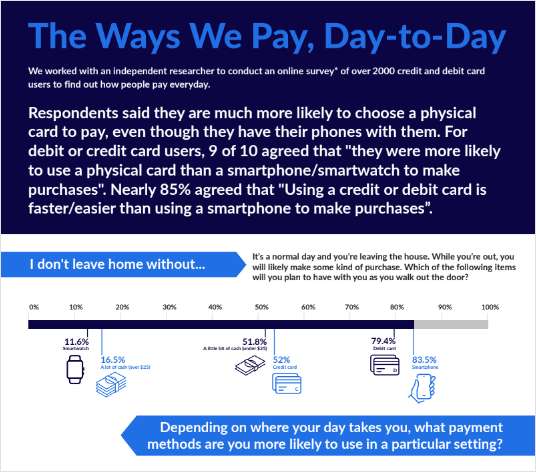 A mass shooting in Marjory Stoneman Douglas High School in Parkland, Florida, led to an outpouring of grief and student-led protests for gun control.
A mass shooting in Marjory Stoneman Douglas High School in Parkland, Florida, led to an outpouring of grief and student-led protests for gun control.Holding Parents Responsible for Children's Violence
It is high time that prosecutors and courts begin to hold criminally irresponsible individuals responsible for their actions.
July 02, 2019 at 04:21 PM
3 minute read
“I was going to go down swinging” sounds like a remark that a dejected Little League player would make after an unsuccessful effort to hit a baseball in a big spot on a sunny spring day. It is not. This comment was made on national television by a brave 12-year-old boy who was locked in his classroom after shots were fired in his school in Highlands Ranch, Colorado. He was clutching an aluminum baseball bat for protection.
The scourge of school violence deeply troubles all Americans. With each passing year more and more of these disastrous incidents occur. They have become some type of perverted commonplace event in our country. We have grown uncomfortably accustomed to students fleeing their schools and colleges with their hands in the air followed by a casualty report. In recent events we have begun to hear stories of courageous, unarmed students and teachers grappling with their assailants often with deadly results. The latest being 18-year-old Kendrick Castillo, who heroically lost his life protecting his fellow students at the STEM School in Highlands Ranch. Can the law be used in some manner to attempt to stem this plague of death? It can.
All states have laws which criminalize conduct by adults which expose minors to harm. In Connecticut, that crime is risk of injury to a minor. It is a felony punishable by a maximum period of 10 years of incarceration. Generally, its elements require conduct which exposes a minor to the risk of physical or moral harm. People in Connecticut are prosecuted under this statute for giving a minor a beer. Is it any great leap of logic or law to say that an adult should not make a firearm available to a troubled youth? Should not the law demand that a parent/guardian be held criminally responsible for a minor gaining access to a firearm when the adult is aware that a minor is exhibiting dangerous behaviors?
Likewise, all states have laws that prohibit conduct which recklessly exposes people to the risk of serious bodily harm. In Connecticut, we have the crime of reckless endangerment, which punishes those who recklessly engage in conduct which creates a risk of serious physical injury to others. In a similar vein, should not the law demand that any person be held criminally responsible for an adult gaining access to a firearm when that person demonstrates threatening propensities.
Many of these shooters have demonstrated significant behavioral problems before these violent episodes. There is no more tragic example of this then the troubled life of Adam Lanza, who was responsible for the brutal murder of students and staff at Sandy Hook Elementary School.
The law properly places reasonable burdens on the citizens of this country to conform their behavior for the public good. It is high time that prosecutors and courts begin to hold criminally irresponsible individuals, who permit these murderous people access to firearms, responsible for their actions. It may not end this problem but it will certainly put people on notice that should they ignore the potential danger presented by this access to guns, they will face the criminal justice system.
Maybe someday 12-year-old boys and girls can go back to worrying about baseball games.
|This content has been archived. It is available through our partners, LexisNexis® and Bloomberg Law.
To view this content, please continue to their sites.
Not a Lexis Subscriber?
Subscribe Now
Not a Bloomberg Law Subscriber?
Subscribe Now
NOT FOR REPRINT
© 2025 ALM Global, LLC, All Rights Reserved. Request academic re-use from www.copyright.com. All other uses, submit a request to [email protected]. For more information visit Asset & Logo Licensing.
You Might Like
View All
ADVANCE Act Offers Conn. Opportunity to Enhance Carbon-Free Energy and Improve Reliability With Advanced Nuclear Technologies

Trending Stories
- 1Tensions Run High at Final Hearing Before Manhattan Congestion Pricing Takes Effect
- 2Improper Removal to Fed. Court Leads to $100K Bill for Blue Cross Blue Shield
- 3Michael Halpern, Beloved Key West Attorney, Dies at 72
- 4Burr & Forman, Smith Gambrell & Russell Promote More to Partner This Year
- 5Sanctions Order Over Toyota's Failure to Provide English Translations of Documents Vacated by Appeals Court
Who Got The Work
Michael G. Bongiorno, Andrew Scott Dulberg and Elizabeth E. Driscoll from Wilmer Cutler Pickering Hale and Dorr have stepped in to represent Symbotic Inc., an A.I.-enabled technology platform that focuses on increasing supply chain efficiency, and other defendants in a pending shareholder derivative lawsuit. The case, filed Oct. 2 in Massachusetts District Court by the Brown Law Firm on behalf of Stephen Austen, accuses certain officers and directors of misleading investors in regard to Symbotic's potential for margin growth by failing to disclose that the company was not equipped to timely deploy its systems or manage expenses through project delays. The case, assigned to U.S. District Judge Nathaniel M. Gorton, is 1:24-cv-12522, Austen v. Cohen et al.
Who Got The Work
Edmund Polubinski and Marie Killmond of Davis Polk & Wardwell have entered appearances for data platform software development company MongoDB and other defendants in a pending shareholder derivative lawsuit. The action, filed Oct. 7 in New York Southern District Court by the Brown Law Firm, accuses the company's directors and/or officers of falsely expressing confidence in the company’s restructuring of its sales incentive plan and downplaying the severity of decreases in its upfront commitments. The case is 1:24-cv-07594, Roy v. Ittycheria et al.
Who Got The Work
Amy O. Bruchs and Kurt F. Ellison of Michael Best & Friedrich have entered appearances for Epic Systems Corp. in a pending employment discrimination lawsuit. The suit was filed Sept. 7 in Wisconsin Western District Court by Levine Eisberner LLC and Siri & Glimstad on behalf of a project manager who claims that he was wrongfully terminated after applying for a religious exemption to the defendant's COVID-19 vaccine mandate. The case, assigned to U.S. Magistrate Judge Anita Marie Boor, is 3:24-cv-00630, Secker, Nathan v. Epic Systems Corporation.
Who Got The Work
David X. Sullivan, Thomas J. Finn and Gregory A. Hall from McCarter & English have entered appearances for Sunrun Installation Services in a pending civil rights lawsuit. The complaint was filed Sept. 4 in Connecticut District Court by attorney Robert M. Berke on behalf of former employee George Edward Steins, who was arrested and charged with employing an unregistered home improvement salesperson. The complaint alleges that had Sunrun informed the Connecticut Department of Consumer Protection that the plaintiff's employment had ended in 2017 and that he no longer held Sunrun's home improvement contractor license, he would not have been hit with charges, which were dismissed in May 2024. The case, assigned to U.S. District Judge Jeffrey A. Meyer, is 3:24-cv-01423, Steins v. Sunrun, Inc. et al.
Who Got The Work
Greenberg Traurig shareholder Joshua L. Raskin has entered an appearance for boohoo.com UK Ltd. in a pending patent infringement lawsuit. The suit, filed Sept. 3 in Texas Eastern District Court by Rozier Hardt McDonough on behalf of Alto Dynamics, asserts five patents related to an online shopping platform. The case, assigned to U.S. District Judge Rodney Gilstrap, is 2:24-cv-00719, Alto Dynamics, LLC v. boohoo.com UK Limited.
Featured Firms
Law Offices of Gary Martin Hays & Associates, P.C.
(470) 294-1674
Law Offices of Mark E. Salomone
(857) 444-6468
Smith & Hassler
(713) 739-1250












